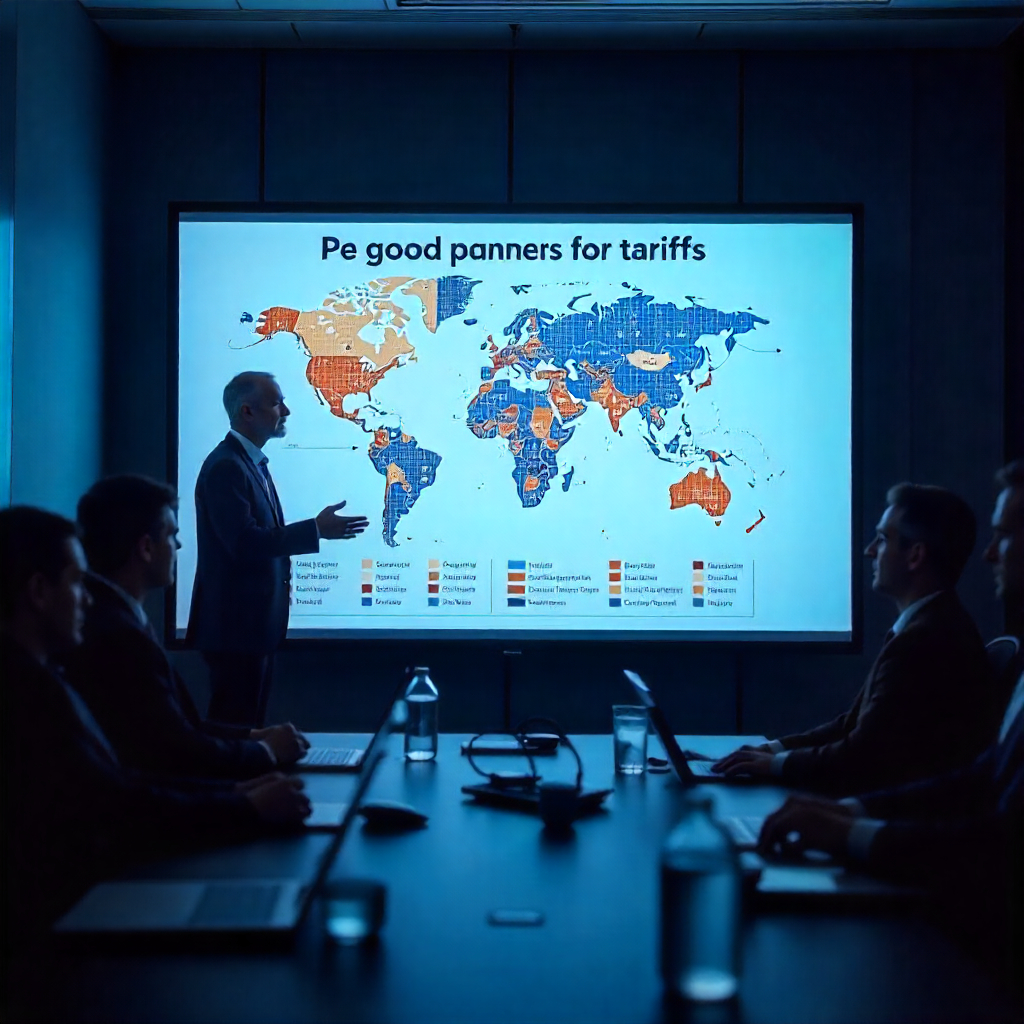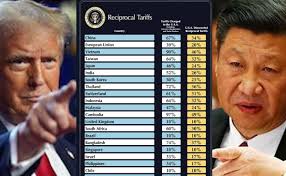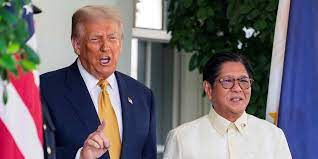Introduction to Tariff News: Understanding the Economic Landscape
In 2025, tariff news has become one of the most discussed topics in the world of economics, politics, and international business. Whether it’s a change in import duties between the U.S. and China, trade adjustments in post-Brexit Europe, or new levies on raw materials in developing countries, tariff-related developments are reshaping how the global economy functions.
This article is your comprehensive guide to the latest tariff news, its impact on global trade, industries affected the most, and what future trends we can expect as governments continue to use tariffs as strategic economic tools.
What Are Tariffs and Why Are They Important?
Tariffs are taxes or duties imposed by governments on imported or exported goods. In recent tariff news, countries have been leveraging these trade tools to:
-
Protect domestic industries
-
Generate revenue
-
Influence geopolitical dynamics
-
Respond to unfair trade practices
Types of Tariffs Making Headlines
The most commonly featured in tariff news are:
-
Ad Valorem Tariffs: Based on the value of the goods.
-
Specific Tariffs: Charged per unit (e.g., per ton or per item).
-
Protective Tariffs: Used to shield domestic businesses.
-
Retaliatory Tariffs: Imposed in response to another country’s tariffs.
Recent Tariff News Highlights (2024–2025)
Let’s examine some of the biggest stories in tariff news over the past year that have made waves globally.
U.S.–China Trade Tensions Resurface
In late 2024, the U.S. government announced a new wave of tariffs on Chinese microchips and green energy technology. According to tariff news from the White House, the move aims to reduce dependency on Chinese tech while revitalizing domestic manufacturing.
China retaliated with its own tariffs on U.S. soybeans and aerospace components, triggering fears of a trade war similar to what occurred in 2018.
EU Tariffs on Environmental Grounds
Europe is taking a unique approach. Recent tariff news from Brussels shows the European Union imposing “carbon tariffs” on imports that have a high carbon footprint. This affects countries with lax environmental regulations and pressures exporters to go green.
India’s Strategic Tariff Adjustments
India made headlines in global tariff news by lowering import duties on certain electronic components while increasing tariffs on Chinese-made furniture and steel. These moves are aimed at promoting the “Make in India” initiative and protecting its domestic manufacturers.
Industry-Wise Impact of Tariff News
Different sectors react uniquely to changes in tariff news. Let’s explore how key industries have been affected:
Technology and Electronics
With chips, smartphones, and renewable energy components in focus, tariff news has reshaped sourcing strategies. Tech companies now seek diversified supply chains outside China and Taiwan.
Agriculture and Food
Recent tariff news from Latin America highlights concerns over rising food tariffs. Countries like Brazil and Argentina are negotiating with major markets to avoid losing competitive advantage due to new trade barriers.
Automotive Sector
Auto companies in Germany, Japan, and South Korea have closely monitored tariff news, particularly as the U.S. considers raising duties on foreign EVs to boost its own electric vehicle sector.
The Role of Tariff News in Stock Markets and Investment
Investor Sentiment
Tariff announcements often lead to stock market volatility. For instance, major tariff news about semiconductor duties in early 2025 caused a 4% drop in tech stocks across U.S. and Asian markets.
Currency Fluctuations
Tariff disputes impact currency markets. When a country imposes heavy tariffs, its currency may strengthen or weaken based on investor confidence. This is why tariff news is also a hot topic in forex trading.
Foreign Direct Investment (FDI)
Many businesses change investment plans based on tariff news. For instance, Japanese carmakers are expanding production in Vietnam to avoid higher U.S. tariffs on China-based manufacturing.
How Tariff News Affects Small and Medium Enterprises (SMEs)
While multinational corporations have the resources to adapt, SMEs often bear the brunt of sudden changes in tariff news. Higher input costs, delayed shipments, and altered supply chains can strain their budgets and growth plans.
Cost Management Challenges
When tariffs are introduced, small importers face increased costs, which are often passed on to consumers. Recent tariff news in the textile industry showed small Indian manufacturers struggling with increased prices on imported fabrics.
Exporters on Alert
SMEs that rely on exports must constantly monitor tariff news to avoid trade surprises. Sudden duties from buyer countries can erode profit margins and even cancel deals.
The Politics Behind Tariff News
Trade Policy as a Political Tool
In many countries, tariff news is not just economic—it’s political. Politicians use tariff policies to appeal to voters, protect strategic industries, and position themselves as defenders of national interests.
Upcoming Elections and Tariff Rhetoric
With U.S. elections in 2026 approaching, tariff news is expected to become central to campaign messaging. Candidates from both parties are proposing trade reforms to secure labor support in manufacturing-heavy states.
Tariff News and Global Trade Agreements
WTO’s Involvement
The World Trade Organization (WTO) often mediates disputes caused by aggressive tariffs. According to recent tariff news, WTO ruled against unilateral tariffs by several nations, urging a return to negotiated settlements.
New Trade Blocs and Regional Agreements
The formation of trade blocs like the Regional Comprehensive Economic Partnership (RCEP) and the African Continental Free Trade Area (AfCFTA) are reshaping tariff news by promoting zero-tariff trade within member nations.
Public Reaction and Social Media Buzz Around Tariff News
Tariff updates often go viral. From trending Twitter hashtags to heated LinkedIn debates, tariff news shapes public opinion and influences business narratives in real time.
Future Trends in Tariff News
Rise of Green Tariffs
Expect more tariff news related to environmental sustainability. Countries may impose higher tariffs on polluting products while encouraging green alternatives.
Digital Trade and Tariff Evolution
As digital goods and services grow, new tariff news may revolve around taxing cross-border data usage, AI tools, and cloud computing platforms.
Supply Chain Localization
With geopolitical tensions rising, countries may use tariff news to encourage local production, especially in sectors like pharmaceuticals, semiconductors, and defense.
Expert Opinions on Tariff News
Economists Weigh In
Many economists argue that while tariff news often reflects protectionist moves, long-term free trade agreements remain beneficial for growth and innovation.
Corporate Leaders Speak
CEOs of major corporations monitor tariff news to pivot quickly—whether it means shifting factories, re-negotiating supplier contracts, or adjusting product pricing.
How to Stay Updated on Tariff News
Top Sources for Daily Tariff News
-
Reuters International Trade Section
-
Bloomberg Tariff Tracker
-
World Trade Organization Press Releases
-
CNBC Markets and Trade
Subscribing to these can ensure you never miss the latest tariff news that might impact your business or investments.
Conclusion: Why Tariff News Matters Now More Than Ever
From shifting supply chains to rising prices and evolving trade alliances, tariff news reflects deeper economic currents that define the world today. Whether you’re a business owner, investor, policymaker, or a curious citizen, staying informed about tariff news gives you an edge in understanding global shifts.
In 2025 and beyond, expect tariff news to remain front and center in shaping how goods flow, how industries compete, and how nations collaborate—or clash. Bookmark this page for weekly updates on all things related to tariff news.


